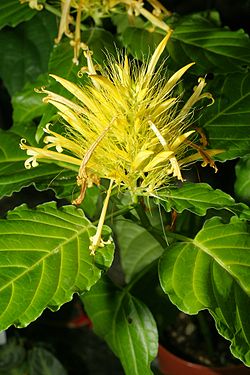Schaueria
| Schaueria subsp. var. | ||||||||||||||||||||||||||||||||||||||||||||||||||||||||
|---|---|---|---|---|---|---|---|---|---|---|---|---|---|---|---|---|---|---|---|---|---|---|---|---|---|---|---|---|---|---|---|---|---|---|---|---|---|---|---|---|---|---|---|---|---|---|---|---|---|---|---|---|---|---|---|---|

|
|
| ||||||||||||||||||||||||||||||||||||||||||||||||||||||
| ||||||||||||||||||||||||||||||||||||||||||||||||||||||||
Describe plant here...
| Standard Cyclopedia of Horticulture |
|---|
|
Schaueria (after J. C. Schauer, professor at Greifswald, 1813-1848). Acanthaceae. Erect half-shrubby herbs, of greenhouse cult., with entire lvs.: fls. yellow or red, in a terminal thyrse or spike; calyx 5-parted, segms. linear or setaceous; corolla-tube long, gradually broadened upward; limb 2-lipped, the upper lip interior narrow, entire or emarginate, erect, lower lip cut into 3 subequal, recurved segms.; stamens 2 each, with 2 parallel anthers, about as long as the upper lip; aborted stamens wanting; style filiform; ovary seated on a disk, 2-loculed, with 2 seeds in each locule.— About 8 species from Brazil. Closely related to Jacobinia, from which it differs by the equal parallel anther-cells. It is distinguished from Anisacanthus by its setaceous calyx-lobes, and from Fittonia by its habit. CH
|
Cultivation
Propagation
Pests and diseases
Species
Gallery
-
photo 1
-
photo 2
-
photo 3
References
- Standard Cyclopedia of Horticulture, by L. H. Bailey, MacMillan Co., 1963
External links
- w:Schaueria. Some of the material on this page may be from Wikipedia, under the Creative Commons license.
- Schaueria QR Code (Size 50, 100, 200, 500)
